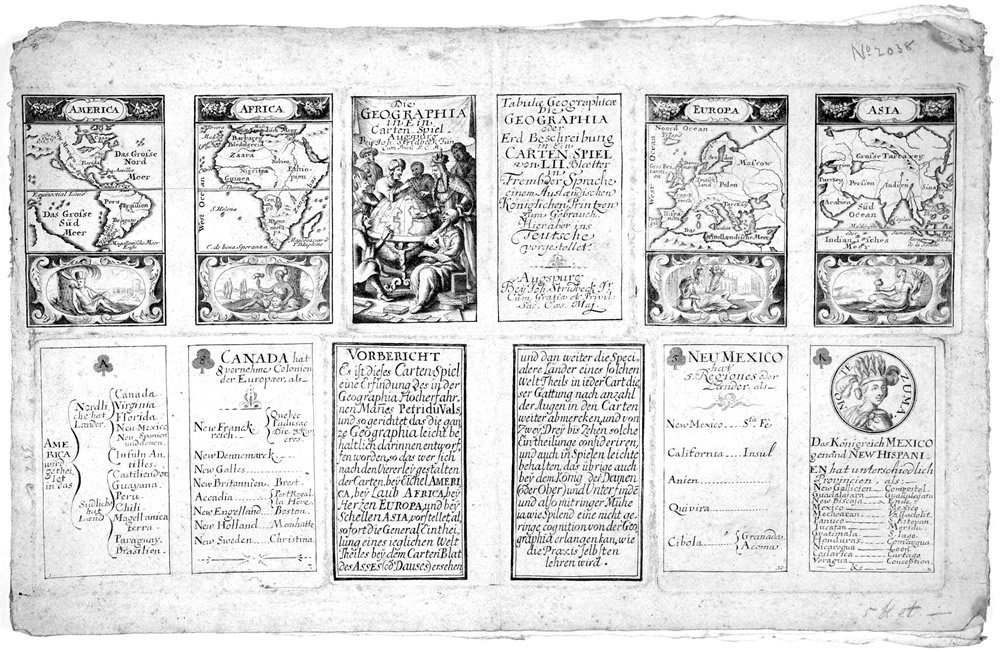Johann Stridbeck, Part II

Johann Stridbeck the Elder was the first printmaker and publisher in Augsburg who specialised in maps and topography. From a family of merchants, originally based in Hamburg, he moved to Augsburg in 1659 and increasingly devoted himself to printmaking and its distribution (at the same time neglecting his inherited silk business). Unfortunately after severe financial problems in 1682 he was imprisoned for debt and was only released in 1690 but found himself confined to Augsburg.
The business was continued by his son who was able to travel extensively pursuing artistic and business interests including making drawings, applying for printing privileges and acquiring some woodblocks by Jost Amman. The occupation of the city by the troops of the Bavarian elector Max Emanuel forced Stridbeck the Younger to relocate to Frankfurt in 1704, although he was later able to return to Augsburg. In addition to views of towns the Stridbecks issued illustrated emblems and proverbs and geographically-themed playing cards.
For the Tabulae Geographicae Die Geographia oder Erd Beschreibung Stridbeck received a printing privilege (1680). The British Museum preserves five uncut sheets stitched together to form a book (fig.). The first sheet has impressions of cards representing the four continents with maps and decorative panels containing reclining female personifications, a frontispiece with men of various nations surrounding a large globe, a title page with the publisher's name; the Ace, 5, 8 and King of Clubs (the latter represented by the Aztec ruler Montezuma) and an explanation (“Vorbericht”) etched on two cards. The remaining sheets bear cards representing each continent - Africa the spades, America the clubs, Asia the diamonds and Europe the hearts.
The Curioses Staats und Kriegs Theatrum series is Stridbeck's most substantial publication and comprises compilations of plates of various territories such as Bavaria or the Tyrol. Typical of Stridbeck are his multiple plates of a city showing a view, often a bird's-eye view, a plan and a map. Most of the work of Stridbeck is derivative and he copied Matthäus Merian and others routinely. A bird's-eye view of Berlin is a copy of a large print by Johann Bernhard Schultz of 1688 and a series of views of Swedish palaces and gardens derive from those of Erik Dahlberg and so on. Unsurprisingly Stridbeck issued a number of prints of Augsburg and a good example is Avgvsta Vindelicorvm AUGSBURG in Ao 1521 that copies and reduces a remarkable woodcut by Hans Weiditz after Jörg Seld. Another copies a more recent engraving by Wolfgang Kilian. A bird's-eye view of Munich, derived from a plate likely originally issued by Abraham Hogenberg, shows Stridbeck's trick to abbreviate the details. It copies outlined blocks of buildings and concentrates on the main roads and landmarks, such as the Residenz and particularly churches. The city is shown surrounded by a fortified wall punctuated by gates and divided into four quarters. Stridbeck also issued large maps including one derived from Philip Apian's famous Bairische Landtafeln revised and featuring a bust of Elector Maximilian Emanuel.
Johann Stridbeck the Younger is perhaps best known for his drawings of Berlin preserved in a slim volume Die Stadt Berlin im Jahre 1690 part of the Manuscripta Borussica in the Staatsbibliothek zu Berlin. This includes a prospect of the Stadtschloss and of the “Lindenallee” (today Unter den Linden) towards the “Thier-Garden” (Tiergarten). There is a second volume containing drawings derived from journeys to Breslau, Dresden, Leipzig, Amsterdam and The Hague. Surprisingly there are three drawings of London which are of great interest of Whitehall and the Banqueting House, St Lawrence Church and the Guildhall and Chelsea College. Stridbeck evidently did use some of his drawings as designs for his prints and these are lettered ad vivum (from life), those of Leipzig and Munich, Lüneberg and Magdeburg. The views of Munich that date to around 1697 have much historical value showing the appearance of the city at that time. The fifteen plates from the series Theatrum Der Vornehmsten Kirchen Clöster Pallaest u. Gebeude in Chur F. Residentz Stadt München includes a striking view of the Frauenkirche and an evocative prospect of the Rindermarkt (Cattle Market) populated by tiny figures and a coach.
The oeuvre of the Stridbecks is complex and extensive. It has now been gathered altogether for the first time in four Hollstein volumes.
Also published as Hollstein's German Engravings, Etchings and Woodcuts 1400-1700, volumes LXXXVI-LXXXIX.
Published in 2018
Compiler: Dieter Beaujean
Editor: Simon Turner
ISBN: 978-94-91539-46-6
376 pp.

